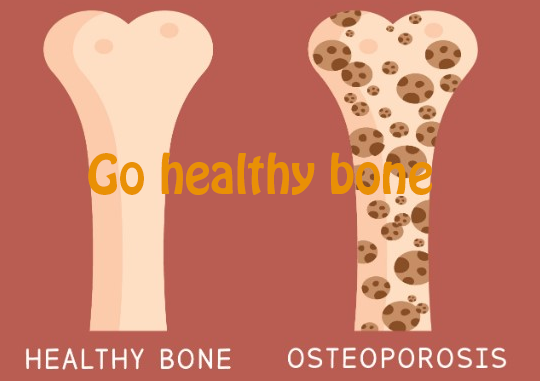Calcium and Vitamin D Recommendations for Osteoporosis. Calcium and vitamin D are important for the forestallment and treatment of osteoporosis. The public Osteoporosis Foundation recommends an input of 800 to 1000 transnational units (IU) of vitamin D3 per day for grown-ups over age 50, and a aggregate of 1200 mg of calcium (aggregate of diet and supplement) per day.
It's important to note that before adding a vitamin D supplement, it's judicious to check if any of the other supplements, multivitamins, or specifics you take contain vitamin D, as numerous calcium supplements also contain some vitamin D. Also, it's important to talk to your healthcare provider if you have any medical conditions or threat factors that may affect your calcium and vitamin D.
The US Preventive Services Task Force(USPSTF) set up shy substantiation to determine the goods of vitamin D and calcium alone or combined, on the prevalence of fractures in men and premenopausal women, but set up acceptable substantiation that diurnal supplementation with 400 IU or lower of vitamin D and 1,000 mg or lower of calcium isn't effective for the primary forestallment of fractures in postmenopausal women.
WHAT ARE SOME LIFE CHANGES THAT CAN HELP OSTEOPOROSIS
Some life changes that can help help osteoporosis include:
1. Regular Exercise, grown-ups should engage in at least 2 hours and 30 twinkles of moderate- intensity aerobic exercise, similar as cycling or fast walking, every week. also, a admixture of weight- bearing and strength- training sessions throughout the week is ideal.
2. Healthy Eating A well- balanced diet, including foods rich in calcium similar as dairy products, dark green leafy vegetables, and dried fruits, is recommended. Calcium is important for maintaining bone health, and grown-ups need around 700 mg a day.
3. Vitamin D Supplements, getting some sun exposure from late March or early April to the end of September can spark the product of vitamin D, which helps the body absorb calcium. Still, if sun exposure isn't sufficient, vitamin D supplements may be necessary.
4. Quit Smoking and Limit Alcohol, smoking and inordinate alcohol consumption are associated with an increased threat of osteoporosis. thus, quitting smoking and limiting alcohol input are important for precluding the condition.
5. Precluding Falls, engaging in exercises that concentrate on posture, balance, and strength, as well as taking safety measures at home and at work to help cascade, can help reduce the threat of fractures, especially for those with low bone mass or osteoporosis. By incorporating these life changes, individualities can contribute to the forestallment of osteoporosis and the conservation of good bone health.
WHAT ARE SOME WEIGHT- BEARING EXERCISES THAT CAN HELP OSTEOPOROSIS
Some weight- bearing exercises that can help help osteoporosis include:
1. Walking, walking is a simple and effective weight- bearing exercise that forces your body to work against graveness, which helps strengthen bones.
2. Climbing Stairs, this exertion also forces your body to work against graveness, making it a salutary weight- bearing exercise for bone health.
3. Dancing, dancing involves colorful movements that make you move against graveness while staying upright, making it a weight- bearing exercise that can help keep bones strong.
4. Tennis Playing, tennis is a high- impact weight- bearing exercise that can help make and maintain bone viscosity.
5. Hiking, hiking is another high- impact weight- bearing exercise that can be salutary for bone health.
6. Brisk Walking, engaging in brisk walking is a classic and effective way to boost bone health, as it's a weight- bearing exercise that can help strengthen bones.
It's important to choose weight- bearing exercises that are suitable for your fitness position and to consult with a healthcare provider before starting a new exercise program, especially if you have osteoporosis or are at threat of fractures.
HOW MUCH VITAMIN D SHOULD BE CONSUMED DAILY TO HELP OSTEOPOROSIS
The recommended diurnal input of vitamin D to help osteoporosis is 800 to 1000 transnational units(IU) for grown-ups progressed 60 and over. For grown ups up to age 70, experts recommend 600 IU of vitamin D per day, and for people 71 and aged, 800 IU is recommended.
Vitamin D plays a pivotal part in bone health, including calcium immersion, bone renewal, mineralization, and muscle strength, which are all important for precluding osteoporosis. It's important to note that before adding a vitamin D supplement, it's judicious to check if any of the other supplements, multivitamins, or specifics you take contain vitamin D, as numerous calcium supplements also contain some vitamin D.
Also, it's important to talk to your healthcare provider if you have any medical conditions or threat factors that may affect your vitamin D conditions.
WHAT ARE SOME FOODS THAT ARE HIGH IN CALCIUM AND VITAMIN D
Some foods that are high in calcium and vitamin D include Calcium- Rich Foods:
1. Dairy Products Milk, rubbish, and yogurt are high in calcium. For illustration, 1 mug of yogurt can give up to 34 of the diurnal value( DV) of calcium.
2. Green lush Vegetables Broccoli, collard flora, kale, and bok choy are good sources of calcium.
3. Seeds Poppy, sesame, celery, and chia seeds are high in calcium. For case, 1 teaspoon of poppy seeds provides 127 mg of calcium, which is 10 of the recommended DV.
4. Fortified Foods Cereals, viands, and some orange authorities are fortified with calcium, making them good sources of the mineral.
Vitamin D- Rich Foods
1. Adipose fish tuna, mackerel, and salmon are high in vitamin D.
2. Foods Fortified with vitamin D, some dairy products, orange juice, soy milk, and cereals are fortified with vitamin D.
3. Egg thralldom, egg thralldom are a source of vitamin D. It's important to consume a variety of these foods to insure an acceptable input of calcium and vitamin D, which are essential for bone health and the forestallment of osteoporosis.








